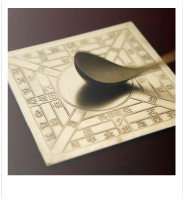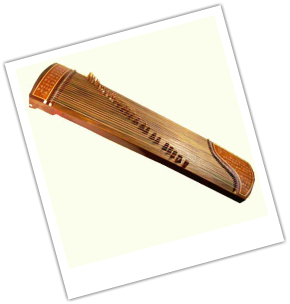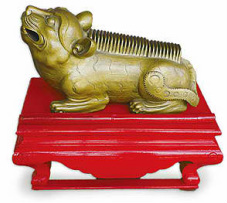
China officially the People's Republic of China, is a sovereign state located in East Asia. It is the world's most populous country, with a population of over 1.35 billion. The PRC is a single-party state governed by the Communist Party, with its seat of government in the capital city of Beijing. It exercises jurisdiction over 22 provinces, five autonomous regions, four direct-controlled municipalities(Beijing, Tianjin, Shanghai, and Chongqing), and two mostly self-governing special administrative regions (Hong Kong and Macau).But before moving further to what China has become let us first take a peek to their rich history and culture as Confucius once said “ Study the past if you would define the future”

Confucius
According to Chinese tradition, was a thinker, political figure, educator, and founder of the RuSchool of Chinese thought. His teachings, preserved in the Lunyu or Analects, form the foundation of much of subsequent Chinese speculation on the education and comportment of the ideal man, how such an individual should live his life and interact with others, and the forms of society and government in which he should participate. One teaching that is still practiced until the present is “filial piety”

Filial Piety
In Confucian philosophy, filial piety is a virtue of respect for one's parents and ancestors. The Confucian classic Xiao Jing thought to be written around the Qin-Han period, has historically been the authoritative source on the Confucian tenet of "filial piety". The book, a conversation between Confucius and his student Zeng Shen, is about how to set up a good society using the principle of filial piety. The term can also be applied to general obedience, and is used in religious titles in Christian Churches, like "filial priest" or "filial vicar" for a cleric whose church is subordinate to a larger parish. Filial piety is central to Confucian role ethics. Filial Piety was also incorporated in a well known Chinese story “The Singing Soul” which tackles about a girl who sacrificed her life in order to make a perfect bell which could greatly make his father happy.
In Confucian philosophy, filial piety is a virtue of respect for one's parents and ancestors. The Confucian classic Xiao Jing thought to be written around the Qin-Han period, has historically been the authoritative source on the Confucian tenet of "filial piety". The book, a conversation between Confucius and his student Zeng Shen, is about how to set up a good society using the principle of filial piety. The term can also be applied to general obedience, and is used in religious titles in Christian Churches, like "filial priest" or "filial vicar" for a cleric whose church is subordinate to a larger parish. Filial piety is central to Confucian role ethics. Filial Piety was also incorporated in a well known Chinese story “The Singing Soul” which tackles about a girl who sacrificed her life in order to make a perfect bell which could greatly make his father happy.

Shih Huang ti
Qin Shi Huang personal name: Zhao Zheng the king of the Chinese State of Qin from 246 BC to 221 BC, during the Warring States period. He became the first emperor of a unified China in 221 BC. He ruled until his death in 210 BC at the age of 49. Calling himself the First Emperor after China's unification, Qín Shǐ Huáng is a pivotal figure in Chinese history, ushering in nearly two millennia of imperial rule. After unifying China, he and his chief advisor Li Si passed a series of major economic and political reforms. He undertook gigantic projects, including building and unifying various sections of the Great Wall of China, the now famous city-sized mausoleum guarded by the life-sized Terracotta Army, and a massive national road system, all at the expense of numerous lives. To ensure stability, Qin Shi Huang outlawed and burned many books and buried some scholars alive
Qin Shi Huang personal name: Zhao Zheng the king of the Chinese State of Qin from 246 BC to 221 BC, during the Warring States period. He became the first emperor of a unified China in 221 BC. He ruled until his death in 210 BC at the age of 49. Calling himself the First Emperor after China's unification, Qín Shǐ Huáng is a pivotal figure in Chinese history, ushering in nearly two millennia of imperial rule. After unifying China, he and his chief advisor Li Si passed a series of major economic and political reforms. He undertook gigantic projects, including building and unifying various sections of the Great Wall of China, the now famous city-sized mausoleum guarded by the life-sized Terracotta Army, and a massive national road system, all at the expense of numerous lives. To ensure stability, Qin Shi Huang outlawed and burned many books and buried some scholars alive

Great Wall of China
The Great Wall, one of the greatest wonders of the world, was listed as a World Heritage by UNESCO in 1987. Just like a gigantic dragon, the Great Wall winds up and down across deserts, grasslands, mountains and plateaus, stretching approximately 8,851.8 kilometers (5,500 miles) from east to west of China. With a history of more than 2000 years, some of the sections are now in ruins or have disappeared. However, it is still one of the most appealing attractions all around the world owing to its architectural grandeur and historical significance.
Construction Period: About 2,000 years from the Warring States Period (476 BC - 221 BC) to Ming Dynasty (1368-1644)The Wall we see today was mostly built during the Ming Dynasty (1368 - 1644).
The Great Wall, one of the greatest wonders of the world, was listed as a World Heritage by UNESCO in 1987. Just like a gigantic dragon, the Great Wall winds up and down across deserts, grasslands, mountains and plateaus, stretching approximately 8,851.8 kilometers (5,500 miles) from east to west of China. With a history of more than 2000 years, some of the sections are now in ruins or have disappeared. However, it is still one of the most appealing attractions all around the world owing to its architectural grandeur and historical significance.
Construction Period: About 2,000 years from the Warring States Period (476 BC - 221 BC) to Ming Dynasty (1368-1644)The Wall we see today was mostly built during the Ming Dynasty (1368 - 1644).

Sinocentrism
Refers to the ancient notion that China was the cultural center of the world. sinocentrism refers to either the ethnocentrism of the Han people and Han culture, or the modern concept of zhonghua minzu. It was popular among the Chinese elites up to the Qing dynasty, but it is not so widely popular among Chinese in present day. In pre-modern times, it often took the form of viewing China as the most advanced civilization in the world, and external ethnic groups or foreign nations as being uncivilized to various degrees, a distinction known in Chinese as the Hua-Yi distinction. In modern times, it sometimes can take the form of according China significance or supremacy compared to other nation.
Refers to the ancient notion that China was the cultural center of the world. sinocentrism refers to either the ethnocentrism of the Han people and Han culture, or the modern concept of zhonghua minzu. It was popular among the Chinese elites up to the Qing dynasty, but it is not so widely popular among Chinese in present day. In pre-modern times, it often took the form of viewing China as the most advanced civilization in the world, and external ethnic groups or foreign nations as being uncivilized to various degrees, a distinction known in Chinese as the Hua-Yi distinction. In modern times, it sometimes can take the form of according China significance or supremacy compared to other nation.

Temples
A Chinese temple can refer to any temple which is used for the practice of Chinese folk religion. Chinese Buddhist temples and Taoist temples are different from these temples, most of which also act as a monastery. Inside a typical temple, it is considered quite common to see elements of Buddhism and Taoism mixed together.
A statue of Guan Yin may be present alongside traditionally Taoist deities such as the Jade Emperor or Mazu. Chinese temples are also a common sight outside of Mainland China, including most parts of East Asia and across the world where there is a plurality of Chinese-descent residents.

Taoisim
Taoism, with more than 1,800 years’ history originated in the Warring Period and came into being in Eastern Han Dynasty (25 - 220). Now about 300 Taoist Temples are scattered around China, in which about 30 thousand Taoists lived in. The followers of this Religion believes that life is guided by Tao or Dao and having a close relationship with them will bring them happiness and peace. In the 1,800 years, Taoism influenced the local culture deeply, especially on traditional medicine and literature. Based on some theories of alchemists such as Wei Boyang in Eastern Han Dynasty, different kinds of medicine prescriptions were created by Sun Simiao and many other doctors. In literature, many fictional characters are closely related with Taoism, such as the Jade Emperor.
Taoism, with more than 1,800 years’ history originated in the Warring Period and came into being in Eastern Han Dynasty (25 - 220). Now about 300 Taoist Temples are scattered around China, in which about 30 thousand Taoists lived in. The followers of this Religion believes that life is guided by Tao or Dao and having a close relationship with them will bring them happiness and peace. In the 1,800 years, Taoism influenced the local culture deeply, especially on traditional medicine and literature. Based on some theories of alchemists such as Wei Boyang in Eastern Han Dynasty, different kinds of medicine prescriptions were created by Sun Simiao and many other doctors. In literature, many fictional characters are closely related with Taoism, such as the Jade Emperor.

China’s Contribution to World Civilization
Porcelain
It is the kind of pottery produced when clay is exposed to high temperature. The Chinese pioneered its manufacture during the Tang Dynasty (618 to 906 CE) and once again, kept the secret of making it to themselves. Porcelain became famed throughout Asian and Europe because of its simple elegance. At the peak of its popularity it was so expensive that Europeans called it “white gold”. Porcelain may as well be the greatest contribution of China to world civilization.
Porcelain
It is the kind of pottery produced when clay is exposed to high temperature. The Chinese pioneered its manufacture during the Tang Dynasty (618 to 906 CE) and once again, kept the secret of making it to themselves. Porcelain became famed throughout Asian and Europe because of its simple elegance. At the peak of its popularity it was so expensive that Europeans called it “white gold”. Porcelain may as well be the greatest contribution of China to world civilization.

Silk
Silk is a type of cloth formed from the fibers secreted by sil worms when they create their cocoons. This popular cloth traces its history back to ancient China. Princess Xi Ling Shi allegedly dropped a silk worm cocoon to her tea and discovered that it can be made into a thread and woven. Silk became an important commodity and was transported to the whole Asia via the Silk Road. For several thousand years, China was able to monopolize the silk market by making its production a secret.
Today the silk is a popular material for fashion and interior design. Modern innovation has also made silk available in several types. Some of the most popular silk types are taffeta, twill, satin, and compose of fancy weave.
Silk is a type of cloth formed from the fibers secreted by sil worms when they create their cocoons. This popular cloth traces its history back to ancient China. Princess Xi Ling Shi allegedly dropped a silk worm cocoon to her tea and discovered that it can be made into a thread and woven. Silk became an important commodity and was transported to the whole Asia via the Silk Road. For several thousand years, China was able to monopolize the silk market by making its production a secret.
Today the silk is a popular material for fashion and interior design. Modern innovation has also made silk available in several types. Some of the most popular silk types are taffeta, twill, satin, and compose of fancy weave.

Magnetic Compass
Qin Shi Huang dynasty.The magnetic compass was first invented as a device fordivination as early as the Chinese Han Dynasty (since about 206 BC). The compass was used in Song Dynasty China by the military for navigational orienteering by 1040-1044, and was used for maritime navigation by 1111 to 1117. The earliest Chinese literature reference to magnetism lies in the 4th century BC writings of Wang Xu "The lodestone attracts iron”. The book also notes that the people of the state of Zheng always knew their position by means of a "south-pointer"; some authors suggest that this refers to early use of the compass

Chinese Clothing
The rise of the Manchu Qing Dynasty in many ways represented a cultural rupture with the past, as Manchu clothing styles were required to be worn by all noblemen and officials. The Qing first implemented queue laws that required the populace to adopt Manch hairstyles and clothing - or face execution. Eventually, this style became widespread among the commoners. A new style of dress, called tangzhuang, included the changshan worn by men and the qipao worn by women. Manchu official headwear differed from the Ming version but the Qing continued to use the Mandarin square.

China’s Musical Instruments
Chi’in
It goes back in the mythological times. The modern version has seven strings of equal length stretched along a wooden sounding board four feet long. Low in pitch and small in volume, it is mostly used in chamber performances before a small audiences. Sound is made by plucking.
Chi’in
It goes back in the mythological times. The modern version has seven strings of equal length stretched along a wooden sounding board four feet long. Low in pitch and small in volume, it is mostly used in chamber performances before a small audiences. Sound is made by plucking.

P’ip’a
A Chinese version of the mandolin or ukulele. It has four strings and frets on a gourd-shaped frame.

Sheng
Looks like a teapot with a bundle of asymmetrical tubes protruding from one end. The tubes resemble the tail of a phoenix. Each tube contain small reed so that the rich tones of the sheng music resembles that of a small reed organ
Looks like a teapot with a bundle of asymmetrical tubes protruding from one end. The tubes resemble the tail of a phoenix. Each tube contain small reed so that the rich tones of the sheng music resembles that of a small reed organ

Yuo
It is a tigerlike animal resting on a sounding box. It is struck to indicate the end of a strophe, a section of an ancient Greek choral ode, in Confucian Rituals
It is a tigerlike animal resting on a sounding box. It is struck to indicate the end of a strophe, a section of an ancient Greek choral ode, in Confucian Rituals
